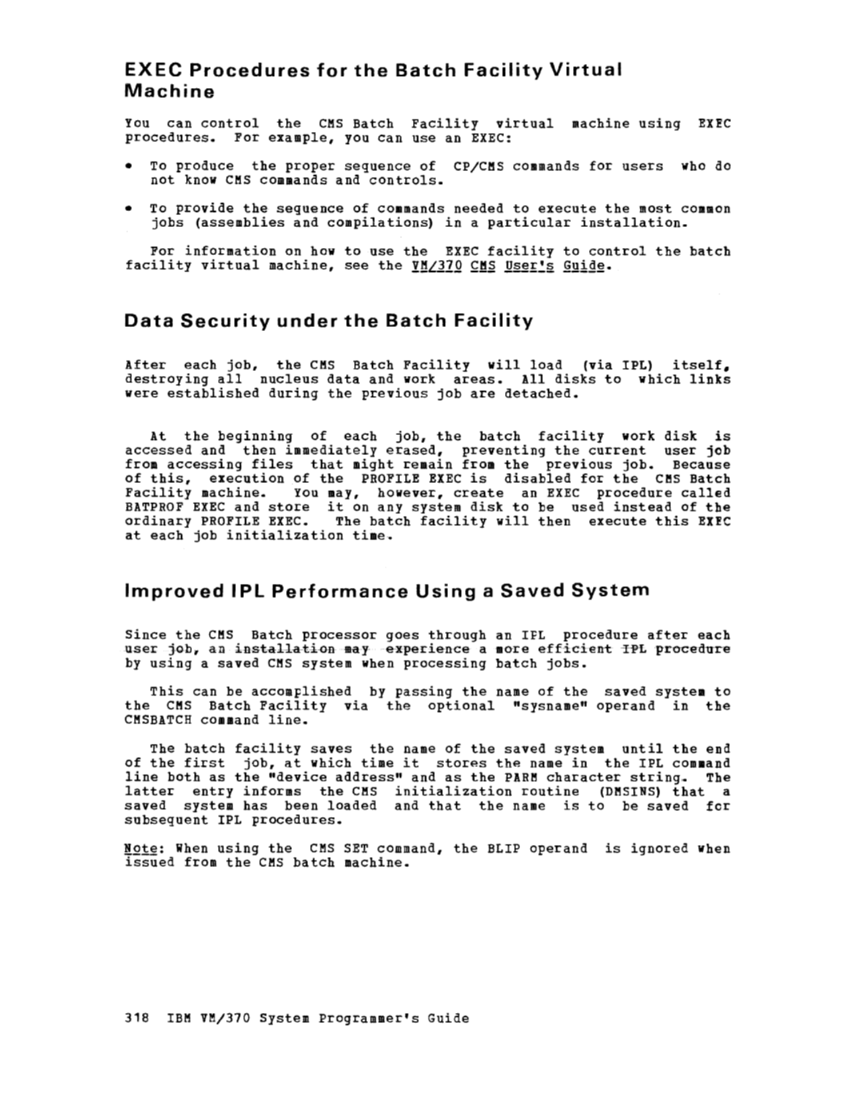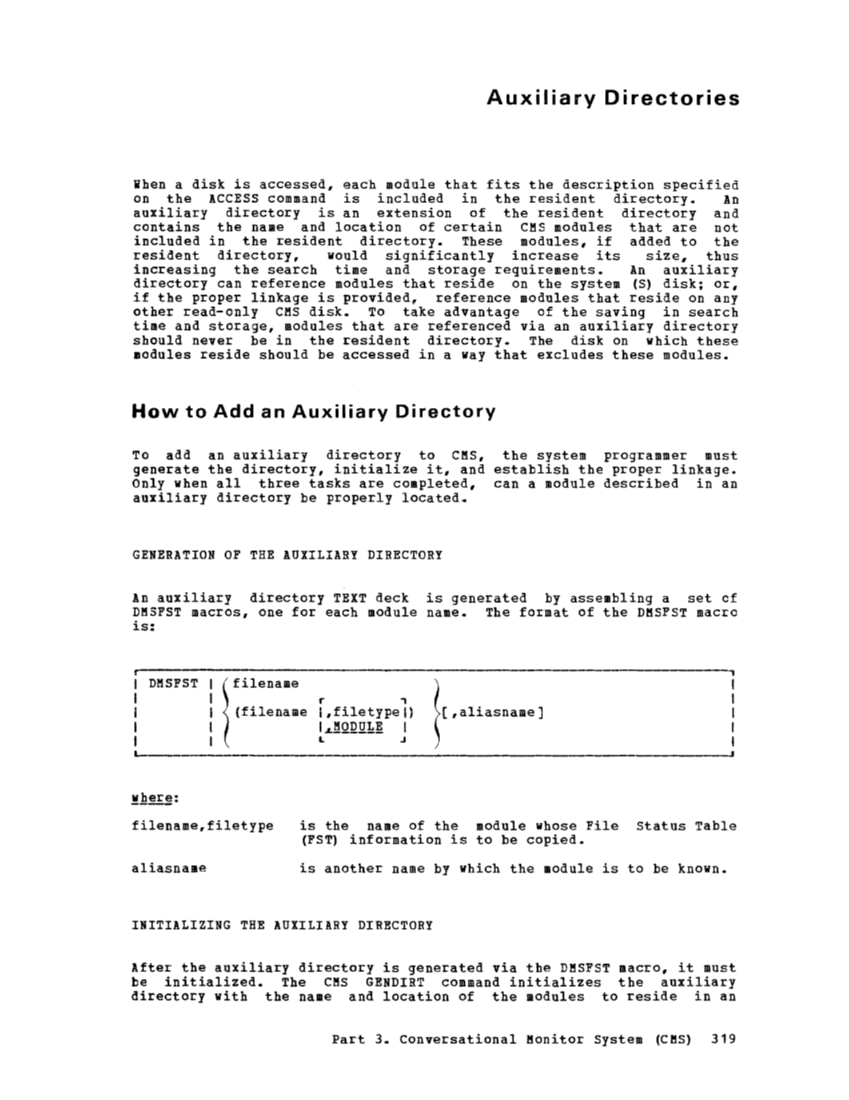EXEC Procedures for the Batch Facility Virtual Machine You can control the CMS Batch Facility virtual machine using EXEC procedures. For example, you can use an EXEC: • To produce the proper sequence of CP/CMS commands for users who do
not knowCMS commands and controls. • To provide the sequence of commands needed to execute the most co.mon jobs (assemblies and compilations) in a particular installation.
For information on how to use theEXEC facility to control the batch
facility virtual machine, see theFacility After each job, the CMS Batch Facility will load (via IPt) itself.
destroying all nucleus data and work areas. All disks to which links
were established during the previous job are detached.
At the beginning of each job, the batch facility work disk is
accessed and then immediately erased, preventing the current user job
from accessing files that might remain from the previous job. Because
of this, execution of thePROFILE EXEC is disabled for the CMS Batch
Facility machine.You may, however, create an EXEC procedure called BATPROF EXEC and store it on any system disk to be used instead of the
ordinaryPROFILE EXEC. The batch facility will then execute this EXEC at each job initialization Improved IPL Performance Using a Saved System Since the CMS Batch processor goes through an IFL procedure after each
user j-ob, an installati-onmay experience a -more efficient IPL procedure by using a saved CMS system when processing batch jobs.
This can be accomplished by passing the name of the saved system to
theCMS Batch Facility via the optional "sysname" operand in the
CMSBATCH command line.
The batch facility saves the name of the saved system until the end
of the first job, at which time it storesthe name in the IPL command line both as the "device address" and as the PARM character string. The
latter entry informs theCMS initialization routine (DMSINS) that a
saved system has been loaded and that the name is to be saved fer
subsequent1PL procedures. When using the CMS SET command, the BLIP operand is ignored when
issued from theCMS batch machine.
318IBM VM/370 System Programmer's Guide
not know
For information on how to use the
facility virtual machine, see the
destroying all nucleus data and work areas. All disks to which links
were established during the previous job are detached.
At the beginning of each job, the batch facility work disk is
accessed and then immediately erased, preventing the current user job
from accessing files that might remain from the previous job. Because
of this, execution of the
Facility machine.
ordinary
user j-ob, an installati-on
This can be accomplished by passing the name of the saved system to
the
CMSBATCH command line.
The batch facility saves the name of the saved system until the end
of the first job, at which time it stores
latter entry informs the
saved system has been loaded and that the name is to be saved fer
subsequent
issued from the
318















































































































































































































































































































































































































































